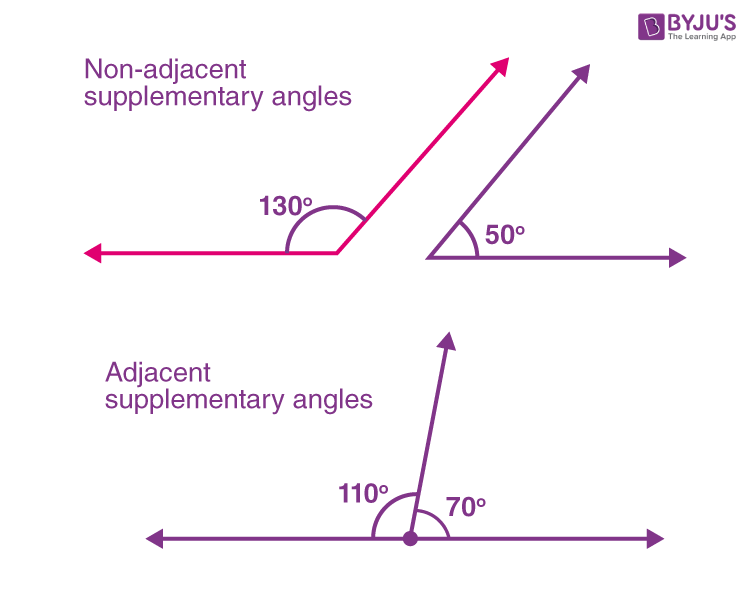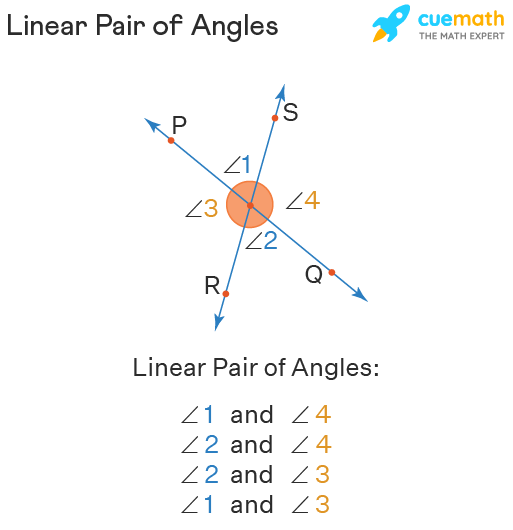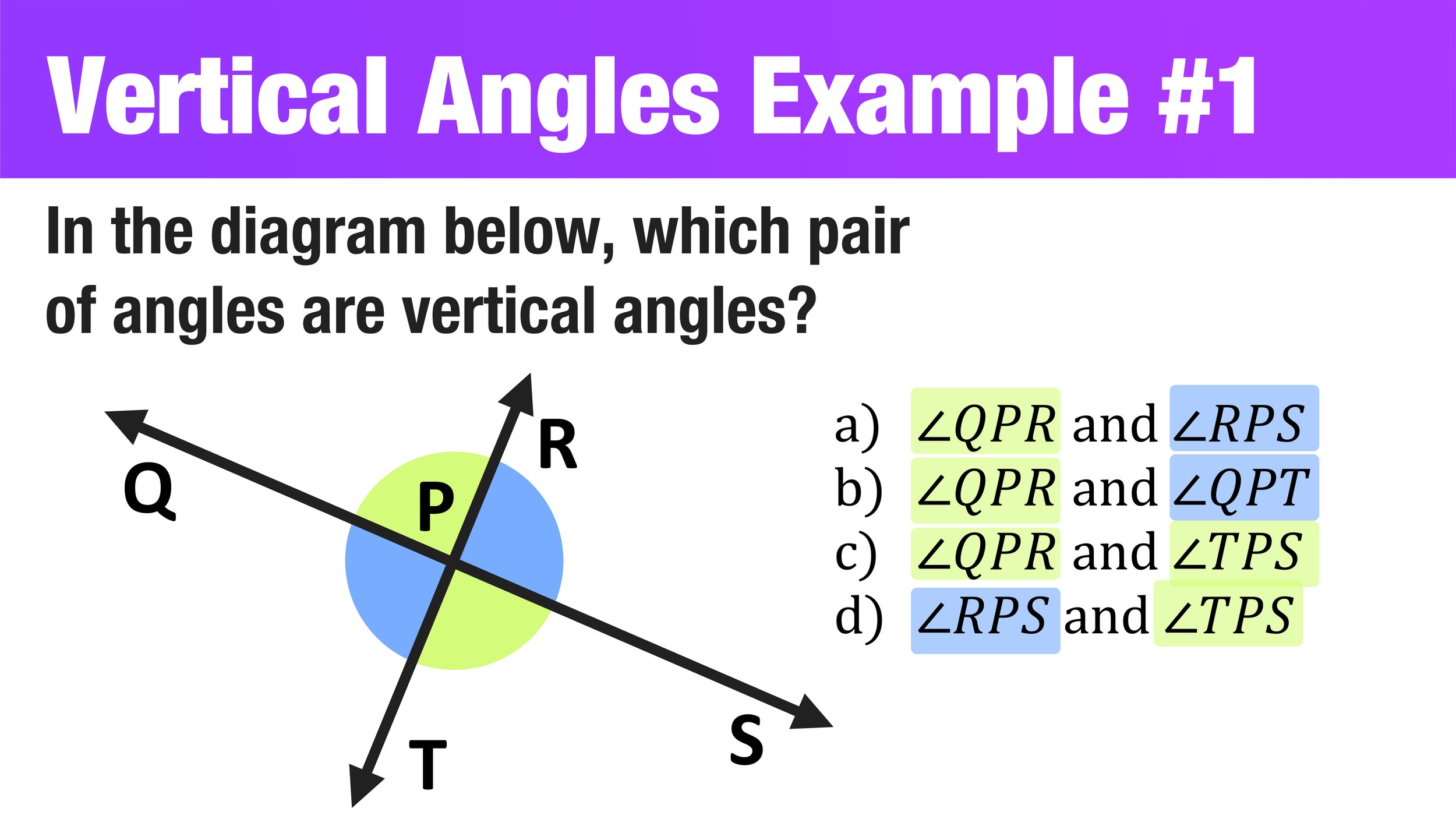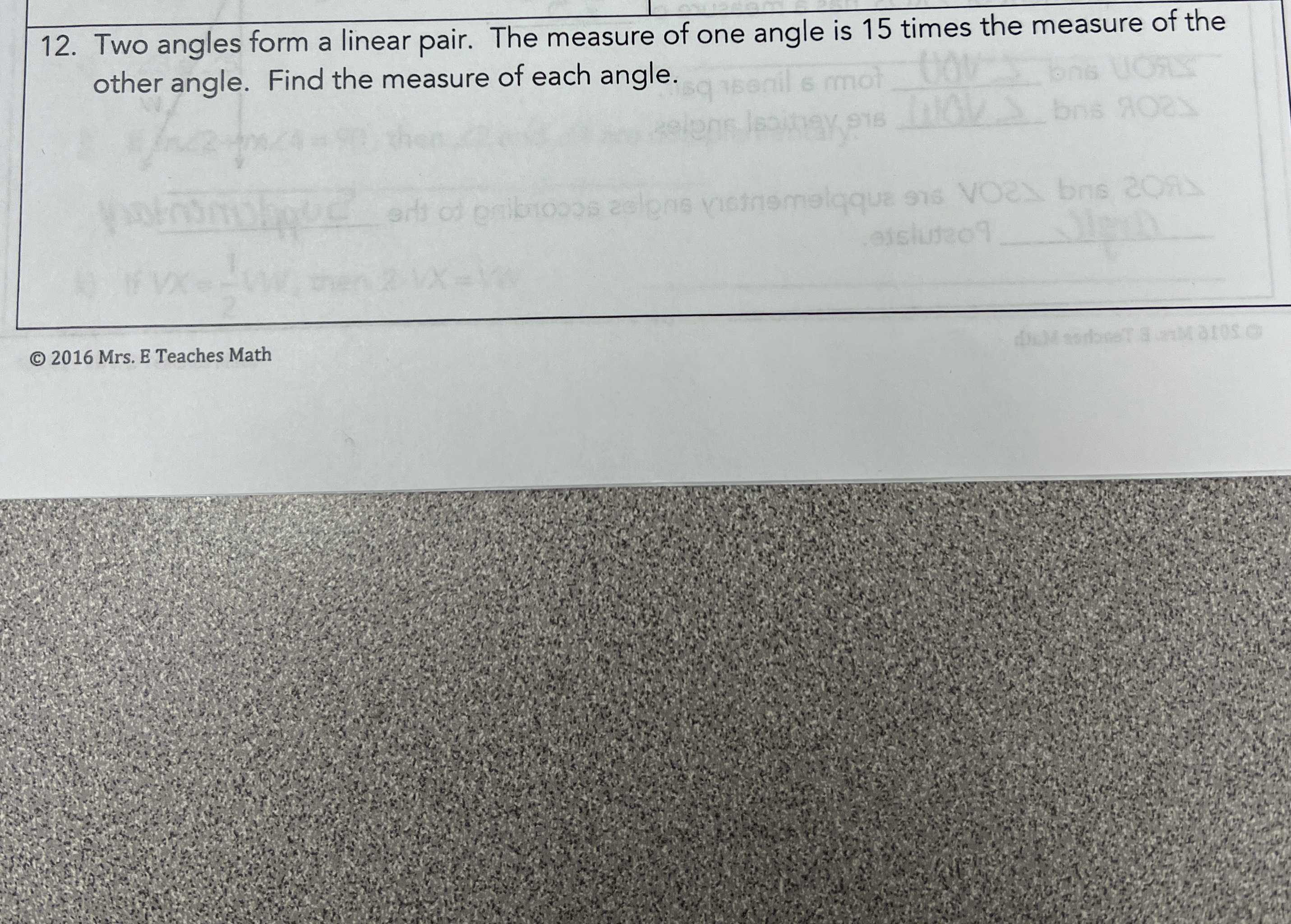Do Two Vertical Angles Form A Linear Pair
Do Two Vertical Angles Form A Linear Pair - Vertical angles, such as ∠1 and ∠2, form linear pairs with the same angle, ∠4, giving m ∠1 + m∠4 = 180 and m ∠2 + m ∠4 = 180. A linear pair cannot be formed by a pair of vertical angles. When two lines cross, vertical angles are. Vertical angles are a pair of nonadjacent angles, ∠1 and ∠2, formed by two intersecting lines. A linear pair is a pair of two angles that are adjacent and supplementary. The given statement is false. A linear pair is two adjacent. Let’s quickly go over the definitions what it means to be adjacent.
A linear pair is two adjacent. Let’s quickly go over the definitions what it means to be adjacent. Vertical angles, such as ∠1 and ∠2, form linear pairs with the same angle, ∠4, giving m ∠1 + m∠4 = 180 and m ∠2 + m ∠4 = 180. The given statement is false. When two lines cross, vertical angles are. Vertical angles are a pair of nonadjacent angles, ∠1 and ∠2, formed by two intersecting lines. A linear pair is a pair of two angles that are adjacent and supplementary. A linear pair cannot be formed by a pair of vertical angles.
A linear pair cannot be formed by a pair of vertical angles. Let’s quickly go over the definitions what it means to be adjacent. When two lines cross, vertical angles are. The given statement is false. A linear pair is two adjacent. Vertical angles are a pair of nonadjacent angles, ∠1 and ∠2, formed by two intersecting lines. A linear pair is a pair of two angles that are adjacent and supplementary. Vertical angles, such as ∠1 and ∠2, form linear pairs with the same angle, ∠4, giving m ∠1 + m∠4 = 180 and m ∠2 + m ∠4 = 180.
Which Pair Of Angles Are Vertical Angles
Let’s quickly go over the definitions what it means to be adjacent. A linear pair is a pair of two angles that are adjacent and supplementary. Vertical angles, such as ∠1 and ∠2, form linear pairs with the same angle, ∠4, giving m ∠1 + m∠4 = 180 and m ∠2 + m ∠4 = 180. Vertical angles are a.
What are Vertical Angles? — Mashup Math
A linear pair is a pair of two angles that are adjacent and supplementary. A linear pair is two adjacent. Vertical angles, such as ∠1 and ∠2, form linear pairs with the same angle, ∠4, giving m ∠1 + m∠4 = 180 and m ∠2 + m ∠4 = 180. The given statement is false. Let’s quickly go over the.
Example of supplementary angle chlistmuscle
Let’s quickly go over the definitions what it means to be adjacent. Vertical angles, such as ∠1 and ∠2, form linear pairs with the same angle, ∠4, giving m ∠1 + m∠4 = 180 and m ∠2 + m ∠4 = 180. A linear pair cannot be formed by a pair of vertical angles. Vertical angles are a pair of.
Question 1 In the figure (i) Is angle 1 adjacent to 2? (ii) Is AOC
Let’s quickly go over the definitions what it means to be adjacent. A linear pair is two adjacent. Vertical angles are a pair of nonadjacent angles, ∠1 and ∠2, formed by two intersecting lines. The given statement is false. A linear pair cannot be formed by a pair of vertical angles.
Linear Pair of Angles Definition, Axiom, Examples
Vertical angles, such as ∠1 and ∠2, form linear pairs with the same angle, ∠4, giving m ∠1 + m∠4 = 180 and m ∠2 + m ∠4 = 180. A linear pair is a pair of two angles that are adjacent and supplementary. Let’s quickly go over the definitions what it means to be adjacent. A linear pair is.
Two angles forming a linear pair are always
Vertical angles are a pair of nonadjacent angles, ∠1 and ∠2, formed by two intersecting lines. A linear pair is a pair of two angles that are adjacent and supplementary. Let’s quickly go over the definitions what it means to be adjacent. Vertical angles, such as ∠1 and ∠2, form linear pairs with the same angle, ∠4, giving m ∠1.
What Is Vertical Angles Theorem Nelson Bountly
Vertical angles, such as ∠1 and ∠2, form linear pairs with the same angle, ∠4, giving m ∠1 + m∠4 = 180 and m ∠2 + m ∠4 = 180. The given statement is false. When two lines cross, vertical angles are. Vertical angles are a pair of nonadjacent angles, ∠1 and ∠2, formed by two intersecting lines. Let’s quickly.
What are Vertical Angles? — Mashup Math
A linear pair is a pair of two angles that are adjacent and supplementary. The given statement is false. Vertical angles are a pair of nonadjacent angles, ∠1 and ∠2, formed by two intersecting lines. When two lines cross, vertical angles are. A linear pair cannot be formed by a pair of vertical angles.
Two angles form a linear pair. The measure of one CameraMath
A linear pair is a pair of two angles that are adjacent and supplementary. Vertical angles are a pair of nonadjacent angles, ∠1 and ∠2, formed by two intersecting lines. A linear pair cannot be formed by a pair of vertical angles. The given statement is false. When two lines cross, vertical angles are.
Day 1 HW Angle Pairs Adjacent, vertical, supplementary, complementary
A linear pair is a pair of two angles that are adjacent and supplementary. Vertical angles are a pair of nonadjacent angles, ∠1 and ∠2, formed by two intersecting lines. A linear pair cannot be formed by a pair of vertical angles. Let’s quickly go over the definitions what it means to be adjacent. The given statement is false.
A Linear Pair Is A Pair Of Two Angles That Are Adjacent And Supplementary.
Vertical angles are a pair of nonadjacent angles, ∠1 and ∠2, formed by two intersecting lines. A linear pair cannot be formed by a pair of vertical angles. Vertical angles, such as ∠1 and ∠2, form linear pairs with the same angle, ∠4, giving m ∠1 + m∠4 = 180 and m ∠2 + m ∠4 = 180. A linear pair is two adjacent.
When Two Lines Cross, Vertical Angles Are.
The given statement is false. Let’s quickly go over the definitions what it means to be adjacent.









